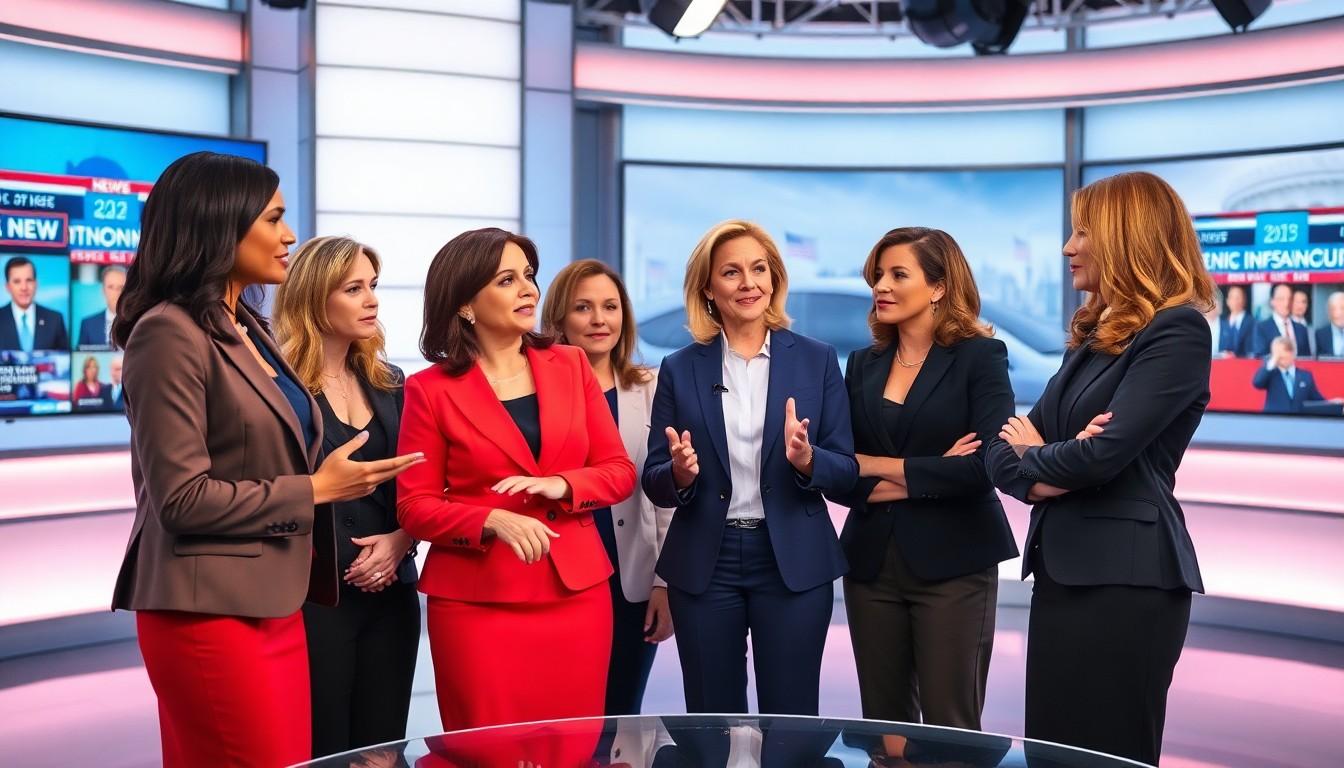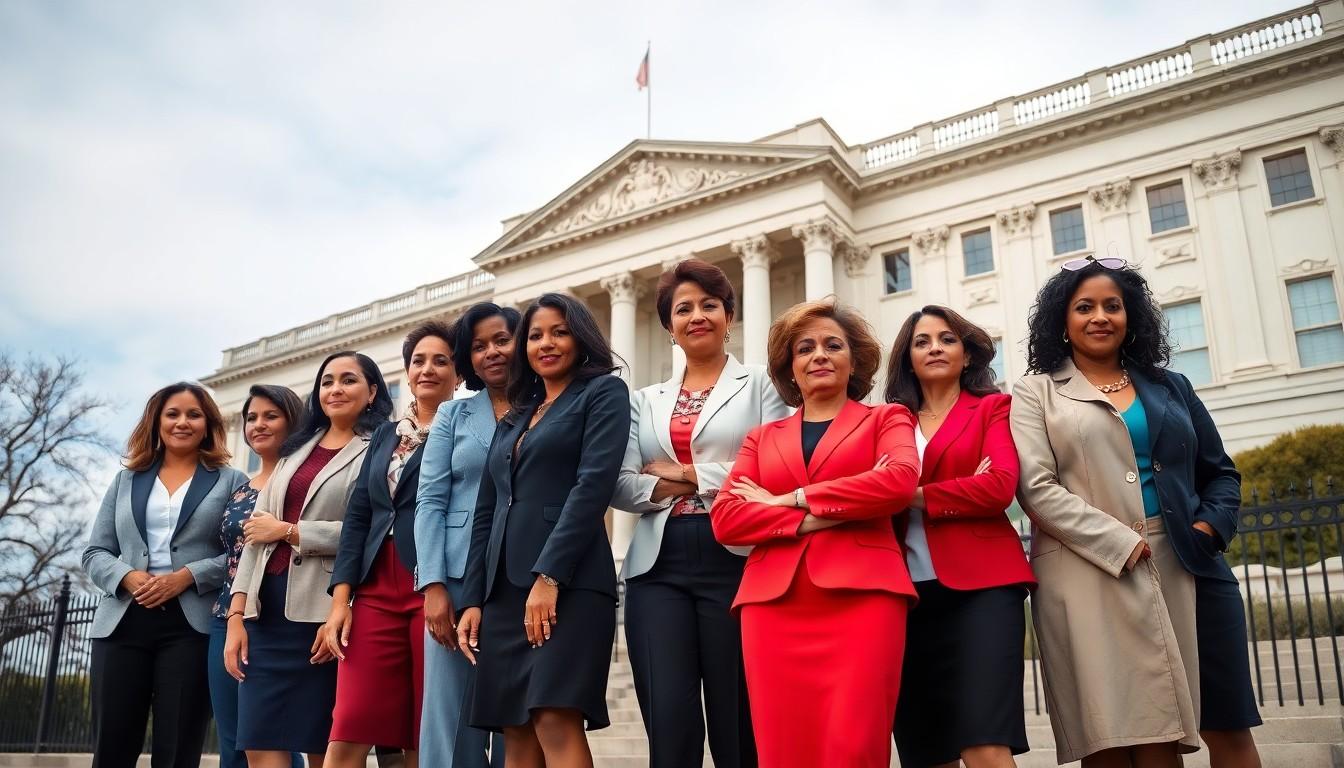The Best Fluffy Pancakes recipe you will fall in love with. Full of tips and tricks to help you make the best pancakes.

Female Political Commentators: Breaking Barriers and Shaping the Future of Discourse
In a world where political debates often resemble a circus, female political commentators are the ringmasters, juggling facts, opinions, and a sprinkle of sass. These women don’t just sit behind a desk; they bring insight and wit to the table, challenging the status quo and making politics accessible to everyone. Whether they’re dissecting policy or poking fun at political blunders, their voices are crucial in shaping public discourse.
Gone are the days when political commentary was a boys’ club. Today’s female commentators are breaking barriers and redefining the narrative, proving that intelligence and humor can coexist. With sharp analysis and a knack for storytelling, they engage audiences and ensure that no one leaves the conversation without a few laughs—or at least a raised eyebrow. So buckle up; it’s time to explore the dynamic world of female political commentators who are changing the game one witty remark at a time.
Overview of Female Political Commentators
Female political commentators play a crucial role in shaping public discourse. They provide unique perspectives that challenge traditional narratives within political discussions. With their ability to analyze complex issues, these women enhance the depth of political commentary. Informing audiences with a blend of expertise and wit, they engage viewers and listeners effectively.
Many established female political commentators have risen to prominence in various media platforms. Notable examples include Rachel Maddow, who combines investigative journalism with sharp analysis, and Fareed Zakaria, who offers global insights. Ana Navarro, known for her outspoken views, provides commentary that resonates with diverse audiences. These women, and others like them, offer voices that reflect a broader range of opinions.
The landscape of political commentary has evolved, reflecting changing societal dynamics. Increasingly, women in this field engage in discussions surrounding policies impacting gender, race, and healthcare. Their contributions help to deconstruct stereotypes often associated with political discourse, fostering an inclusive environment for all voices.
In addition, female political commentators often leverage social media to reach wider audiences. Platforms like Twitter and Instagram allow them to share thoughts instantaneously, breaking news and sharing analysis in real-time. Their ability to connect with younger demographics expands the reach and relevance of political discussions.
Ultimately, female political commentators not only enrich the dialogue but also inspire the next generation to participate in politics. Their presence encourages women and girls to engage with political systems, challenging the notion that these spaces are exclusively male. Through their work, they redefine what it means to be a commentator, ensuring their perspectives continue to influence public conversations.
Historical Context

The landscape of female political commentators reflects significant historical shifts in women’s roles within politics. An in-depth look reveals how women’s involvement in political discourse has evolved over time.
Evolution of Women’s Roles in Politics
Women’s roles in politics transitioned from passive participation to active engagement over the past century. Early female activists fought tirelessly for suffrage, establishing a foundation for future political involvement. The second wave of feminism in the 1960s and 1970s demanded equality, breaking numerous barriers. As a result, women began to occupy leadership positions, influencing policy and public perception. Female representation increased in political offices as laws evolved, paving the way for women commentators. This transformation continues today, with women leveraging their platforms to challenge norms and drive discussions.
Key Milestones in Female Commentary
Significant milestones mark the progress of female political commentators. The 1992 “Year of the Woman” saw an unprecedented number of women elected to Congress, exemplifying their increasing influence. In the late 1990s, personalities like Cokie Roberts and Gwen Ifill gained prominence, establishing credibility and respect in journalism. The rise of the internet in the 2000s enabled women like Rachel Maddow and Ana Navarro to gain wider audiences. Today’s diverse commentators promote inclusivity, providing fresh perspectives across various media platforms. Each milestone represents a leap toward equal representation in political discourse, solidifying women’s roles as vital contributors.
Prominent Female Political Commentators
Female political commentators have carved out significant roles in shaping political discourse. Through their insights and analyses, they bring diverse perspectives to the forefront.
Profiles of Influential Commentators
Rachel Maddow stands out for her incisive analysis and ability to connect complex issues to larger narratives. Ana Navarro, known for her sharp wit, challenges conventional wisdom while advocating for inclusivity. Cokie Roberts laid the groundwork for modern female commentators, blending journalism with political commentary seamlessly. Gwen Ifill became a trailblazer, known for her thoughtful delivery and commitment to covering underserved communities.
Their Contributions and Impact
These commentators contribute to richer political conversations by offering insights that resonate with varied audiences. Their ability to present sensitive subjects like race and gender issues draws attention to critical areas often overlooked. Maddow provides depth in coverage of political events, while Navarro uses her platform to amplify voices on marginalized topics. Roberts and Ifill not only shaped public perception but also inspired future generations of women to engage in political discourse actively. Each commentator’s work fosters a more inclusive environment, urging others to participate in conversations that matter.
Challenges Faced by Female Political Commentators
Female political commentators encounter various challenges that limit their effectiveness and visibility.
Gender Bias and Stereotypes
Gender bias pervades the political landscape, often undermining women’s authority and expertise. Commentators frequently face assumptions about their knowledge based solely on their gender. Critics may dismiss their insights or frame them in ways that emphasize emotional responses over analytical thinking. This bias leads to unfair scrutiny compared to their male counterparts, often placing women in a position where they must prove their credibility repeatedly. Furthermore, stereotypes about women being too emotional or not assertive enough complicate their ability to engage in political discourse fully.
Media Representation Issues
Media representation remains a significant challenge for female political commentators. Underrepresentation occurs in both traditional and digital platforms. Female voices often receive less airtime, limiting their influence in political discussions. When women do appear, they may face narrow portrayals, reducing complex perspectives to simplistic narratives. Coverage that centers on appearance or personal life detracts from their professional achievements and undermines the serious issues they discuss. Ultimately, this lack of equitable representation affects public perception and hinders broader acceptance of women as authoritative figures in political commentary.
The Future of Female Political Commentators
The future of female political commentators looks promising, with an ever-expanding landscape of diverse voices emerging.
Emerging Voices in Political Commentary
Newcomers in political commentary are making significant impacts. Young commentators, often from underrepresented backgrounds, challenge conventional viewpoints and introduce fresh perspectives. Figures like Tara Setmayer and Alyssa Milano exemplify this trend, using their platforms to address issues that resonate with a broad audience. These voices not only enhance political discourse but also encourage greater participation among women in political discussions. Increased visibility for these commentators cultivates an environment where diverse narratives can flourish, ensuring that women are represented in all aspects of political commentary.
The Role of Social Media
Social media platforms play a pivotal role in amplifying female political commentators’ voices. Twitter, Instagram, and TikTok allow women to engage directly with audiences, fostering a sense of community and immediacy. Their ability to share real-time insights helps democratize political conversations. Notable commentators skillfully use these platforms to bypass traditional media gatekeepers, gaining followers who appreciate their unique viewpoints. Engagement on social media not only drives discussion but also mobilizes younger generations to become active participants in political matters. By leveraging digital tools, female commentators continue reshaping the political narrative and redefining the landscape for future discourse.
Conclusion
The rise of female political commentators marks a significant shift in the landscape of political discourse. Their unique perspectives and engaging styles enrich conversations and challenge long-standing narratives. As they continue to break barriers and redefine their roles, these commentators inspire future generations to participate actively in politics.
With the support of digital platforms, women are amplifying their voices and reaching broader audiences. This evolution not only fosters inclusivity but also ensures that diverse viewpoints are represented in political discussions. The ongoing contributions of female commentators are crucial in shaping a more equitable and informed political environment.
